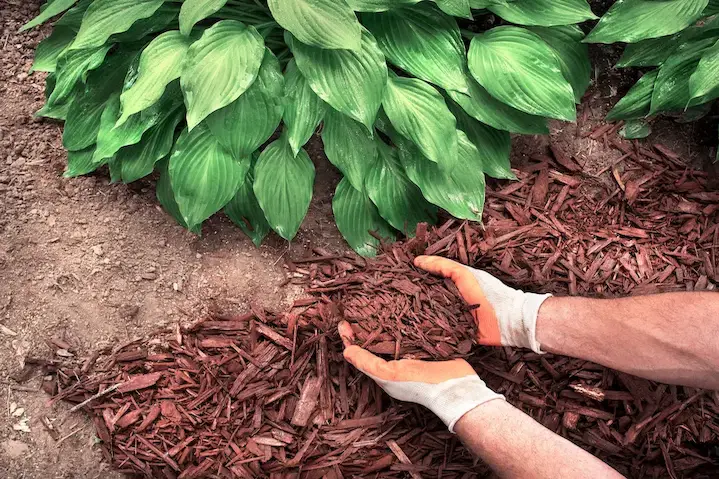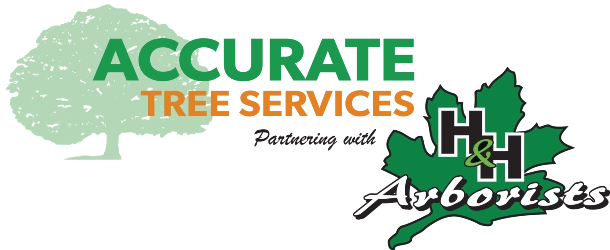
At H&H Accurate Arborists, we recognize that trees and shrubs are much more than simple landscaping features – they are vital, living components of our ecosystem that deserve the highest level of care. To help your garden thrive, it’s essential to provide tree and shrub roots with the nurturing mulch they deserve.
Caring for trees and shrubs isn’t always easy. Many of us know the frustration of watching plants struggle against challenges like drought, pests, or disease. Bare, compacted soil around trees can prevent roots from breathing and absorbing essential nutrients. In response, it’s tempting to rely on frequent watering or chemical treatments to keep them healthy. While these efforts may offer temporary relief, they often fall short of delivering the sustainable, long-term care your plants need.
Our team of local tree care specialists understand the specific requirements of trees and shrubs in Wisconsin. By combining our expertise with premium organic mulch, we can create an optimal environment where your plants can grow and flourish.
The 7 Steps to Proper Mulching
Mulching may seem straightforward, but doing it properly takes responsible skill and care. Here’s a step-by-step guide to ensure you get it right:
- Clear the area: Remove any weeds, grass, or debris from the base of your tree or shrub. This ensures your growing plant won’t have to compete with other vegetation for vital nutrients.
- Address upward-growing roots: Examine the root collar—the area where the trunk flares out at the base. If you notice any roots growing upward, gently prune them. Keep the root collar exposed and free from soil or mulch.
- Select the right mulch: Choose a mulch that suits your yard and meets the specific needs of your trees or shrubs. Options include wood chips, shredded bark, or even unique choices like cocoa shells.
- Spread the mulch: Apply a 2-4 inch layer of mulch around the base of your plant, creating a “donut” shape. Keep the layer thinner near the trunk and slightly thicker toward the outer edges. For trees, extend the mulch to the drip line if possible; for shrubs, go slightly beyond their outer edges.
- Keep mulch away from the trunk: Leave a gap of a few inches between the mulch and the base of the trunk. This prevents excess moisture from causing bark rot and ensures good air circulation.
- Water deeply: After applying the mulch, give the area a thorough watering to help the mulch settle and provide hydration for the roots.
- Monitor and maintain: Check the mulch regularly to ensure it stays at the right depth and retains moisture. As the mulch breaks down over time, add more to keep your plants insulated and protected.
Major Benefits of Mulching
Mulching offers more than just a polished appearance—it’s an essential practice for maintaining the health of trees and shrubs. Here are some of its key benefits:
- Retains moisture: Mulch acts as a barrier, reducing water evaporation and helping soil retain moisture. This is especially beneficial during the warmer months, cutting down on the need for frequent watering.
- Regulates soil temperature: By insulating the soil, mulch keeps it cooler during the summer and warmer in the winter, protecting sensitive roots from extreme temperature swings.
- Suppresses weeds: Mulch blocks sunlight, preventing weed seeds from sprouting and competing with your plants for nutrients and water.
- Enhances soil quality: Organic mulch gradually breaks down, enriching the soil with nutrients and improving its structure and fertility.
- Prevents erosion: By slowing water runoff and absorbing the impact of rain, mulch helps to reduce soil erosion and keeps your landscape intact.
- Protects roots: A layer of mulch shields surface roots from potential damage caused by foot traffic or lawn equipment.
- Improves aesthetics: Beyond its functional benefits, mulch enhances the visual appeal of your garden, creating a neat, well-kept look.
- Reduces soil compaction: Mulch helps maintain loose, aerated soil, making it easier for water to penetrate and roots to grow effectively.
Need a Tree and Plant Healthcare Estimate?
Click below to leave your information and we will call you right back!
Ready to schedule your tree & plant care service?
Leave your information below and we will give you a call back.
*During normal business hours. After hours calls will be returned the next business day.
Are Wood Chips or Mulch More Effective?
Both options are excellent because they offer similar benefits: retaining soil moisture, regulating soil temperature, and reducing weed growth.
Wood chips are composed entirely of shredded wood, while mulch is made from a mixture of materials that could include bark, leaves, and even inorganic options like rubber or stones. This variety gives mulch additional advantages, such as enhanced nutrient release and better moisture retention, depending on the type you select.
The choice ultimately comes down to your personal preferences and gardening goals. Some homeowners in Verona favor the natural, rustic appearance of wood chips, while others enjoy the range of colors and textures that different mulch varieties provide. Whichever option you choose, you’re making a valuable investment in the health and vitality of your trees and shrubs.
Does Mulch Cause Termite Infestations?
While it’s true that termites are drawn to moist environments and wood, using organic mulch doesn’t increase the likelihood of an infestation, as long as it’s implemented correctly. In fact, termites typically prefer dead wood over fresh wood chips or bark mulch.
Don’t let concerns about termites stop you from enjoying the many benefits of mulching! While inorganic mulches like rocks or rubber are an option, they don’t offer the same soil-enriching advantages as organic mulch. The key lies in proper application—maintaining the recommended mulch depth and keeping it away from the base of trees, shrubs, and structures can significantly reduce the risk of attracting termites.
This is why professional mulching makes all the difference! At H&H Accurate Arborists, we tailor our services to the unique needs of your property, taking factors such as soil type, drainage, and sun exposure into account. With our expertise, every tree and shrub gets the precise care it needs to flourish. If you’re interested in learning more about our plant healthcare services, feel free to read what we have to offer.
Verona’s Dependable Tree Mulching Experts
As a proud Wisconsin company, we understand the unique needs of our local trees and shrubs better than anyone. We provide more than just mulch application—everyday we deliver personalized care designed to enhance the health and beauty of our environment.
Each property is unique, which is why we take the time to evaluate yours carefully. From soil composition and drainage, to sun exposure and the specific needs of your plants, we tailor our approach to ensure the best results. We use premium organic mulches that enrich the soil and foster a thriving landscape ecosystem. Plus, we’re always available to offer guidance, answer questions, and support you in maintaining a lush, healthy yard throughout the year.
Give your trees and shrubs the specialized, local care they deserve. Contact us today and let us help you create a healthier, vibrant landscape—for your home and for our community!
Back to Tree and Plant HealthcareHow to Mulch Your Trees and Shrubs in the Greater Madison, WI area
Serving Dane County
Madison | Verona | Fitchburg | Middleton | Monona | Waunakee | McFarland | Sun Prairie | Oregon (WI) | Cross Plains
Stoughton | Cottage Grove | DeForest | Belleville | Mount Horeb
Home » Tree and Plant Healthcare » How to Mulch Your Trees and Shrubs



